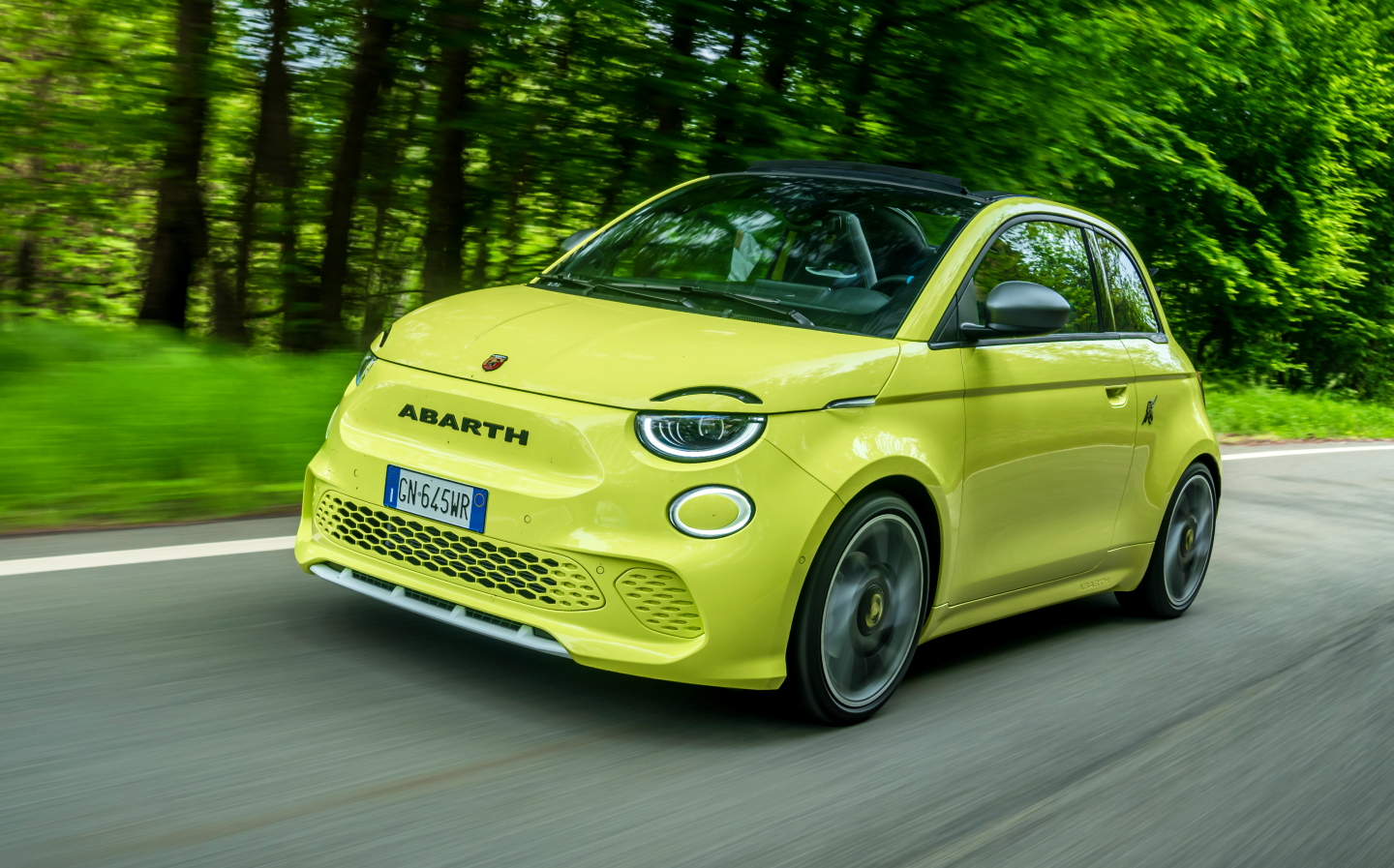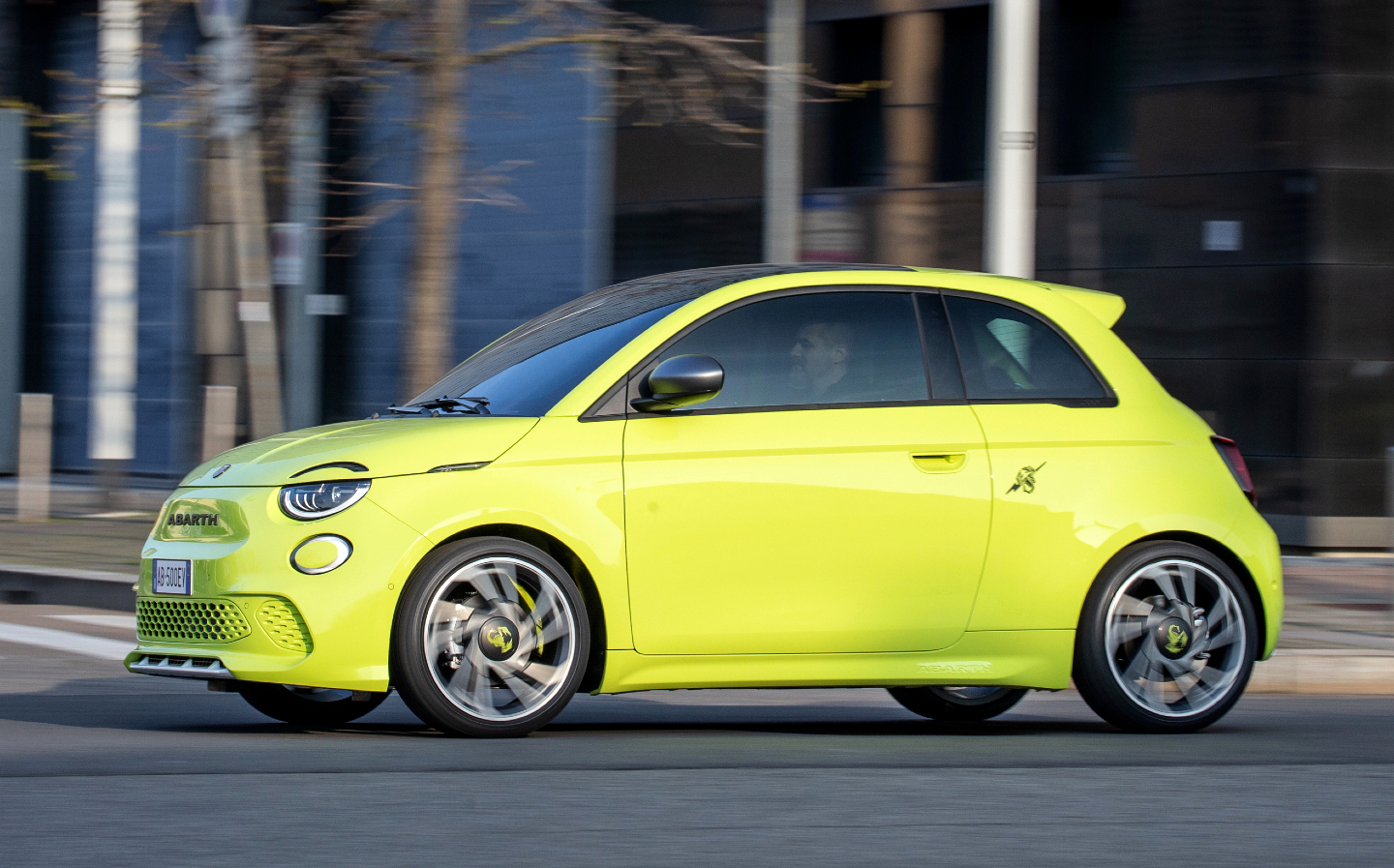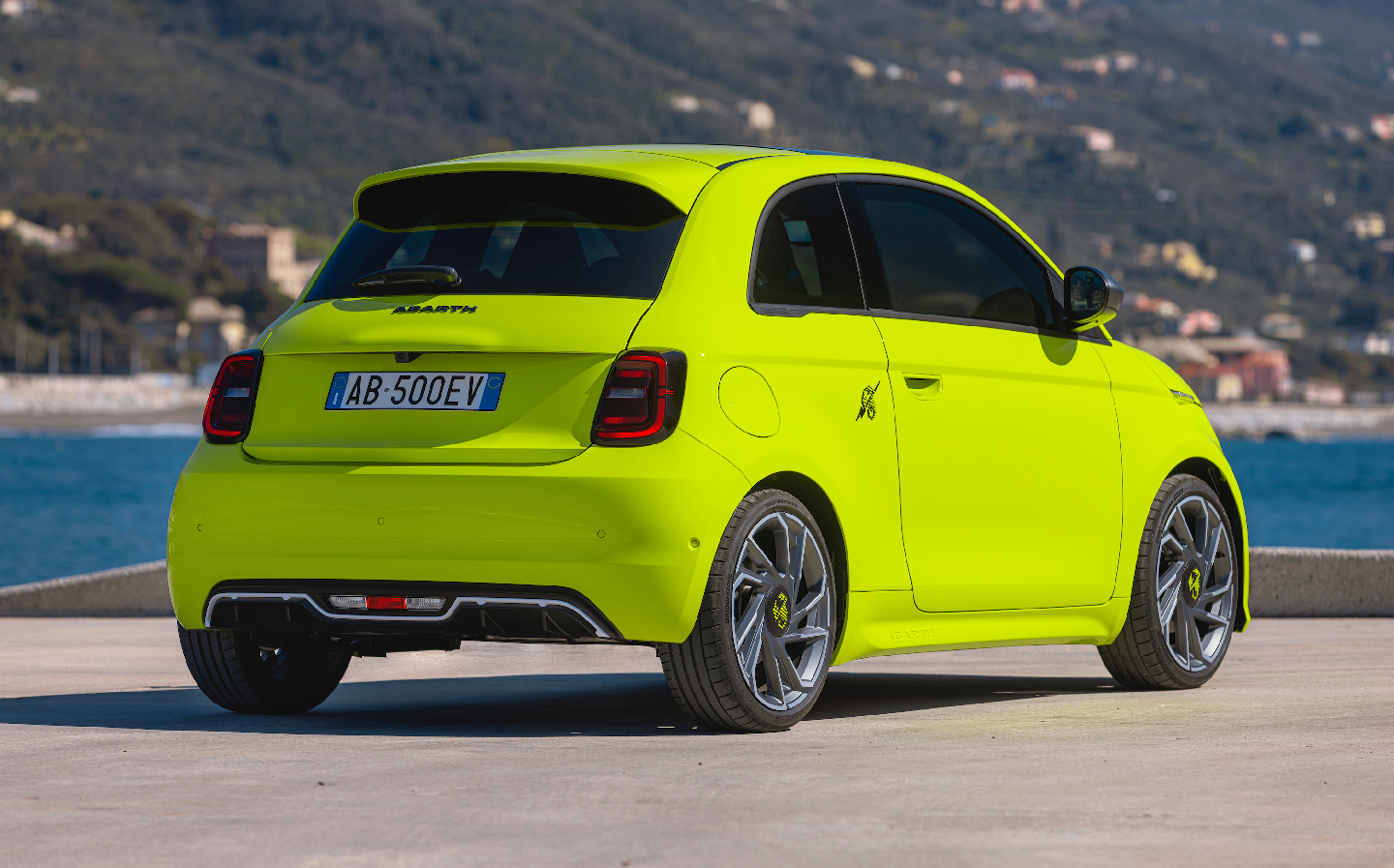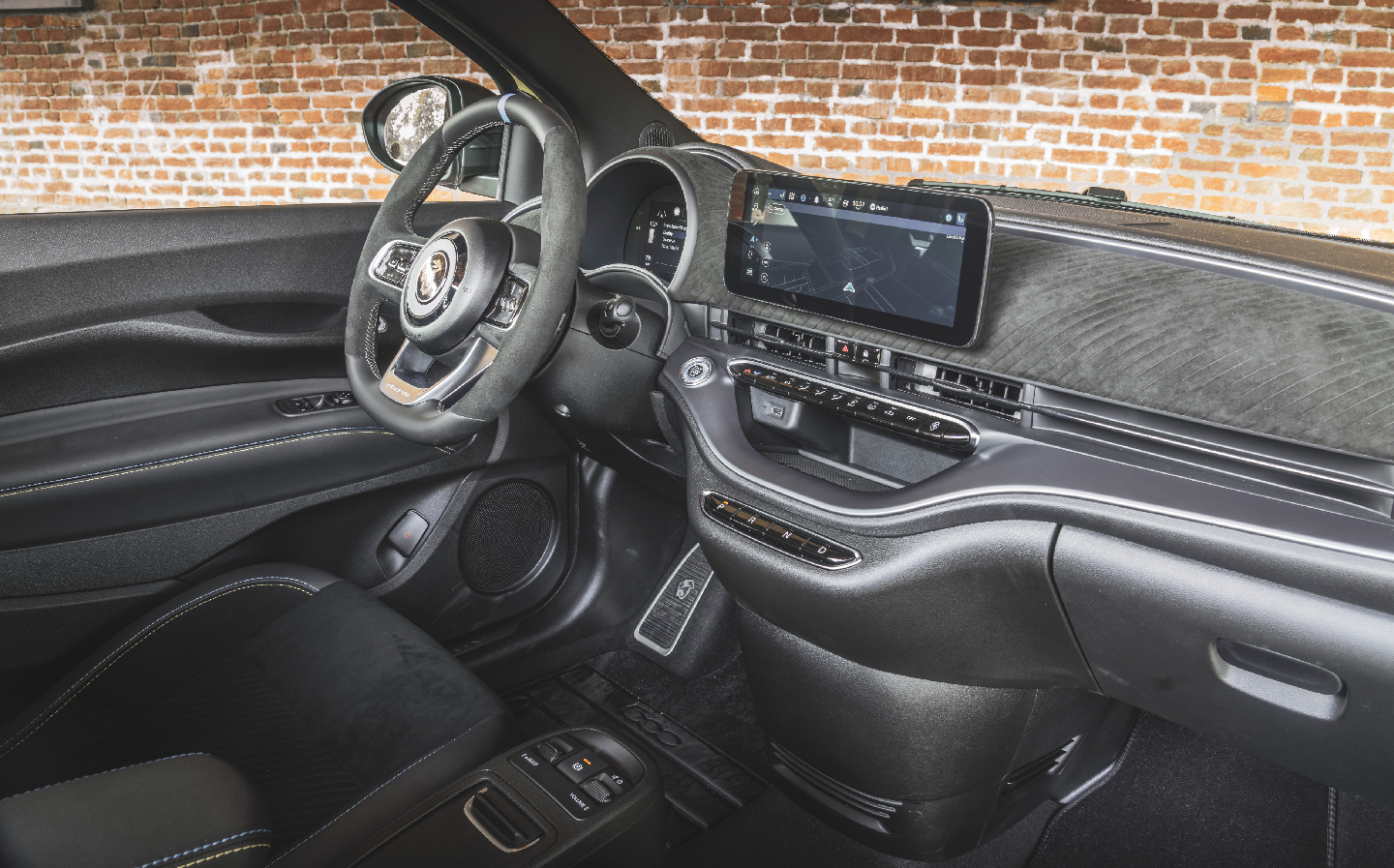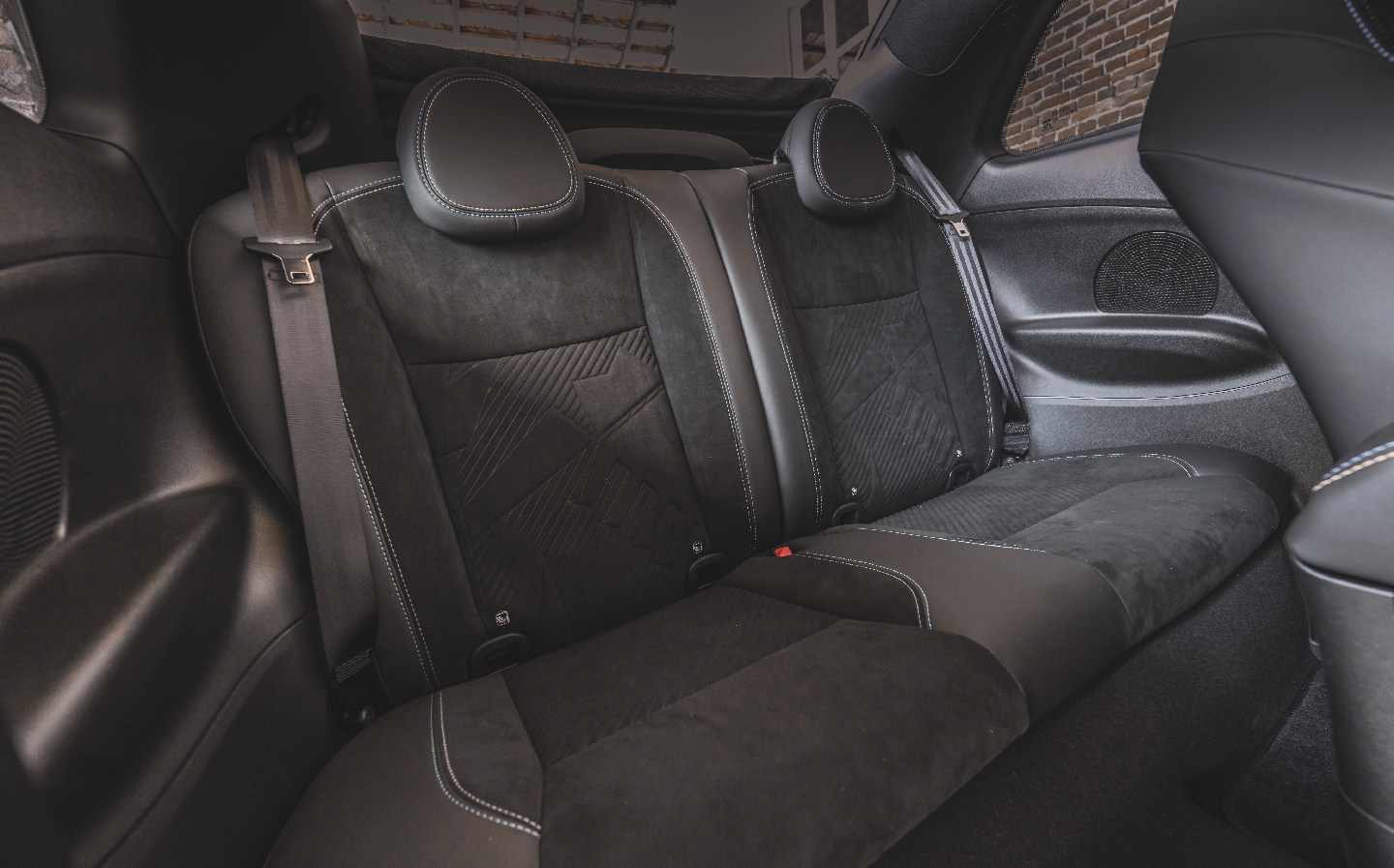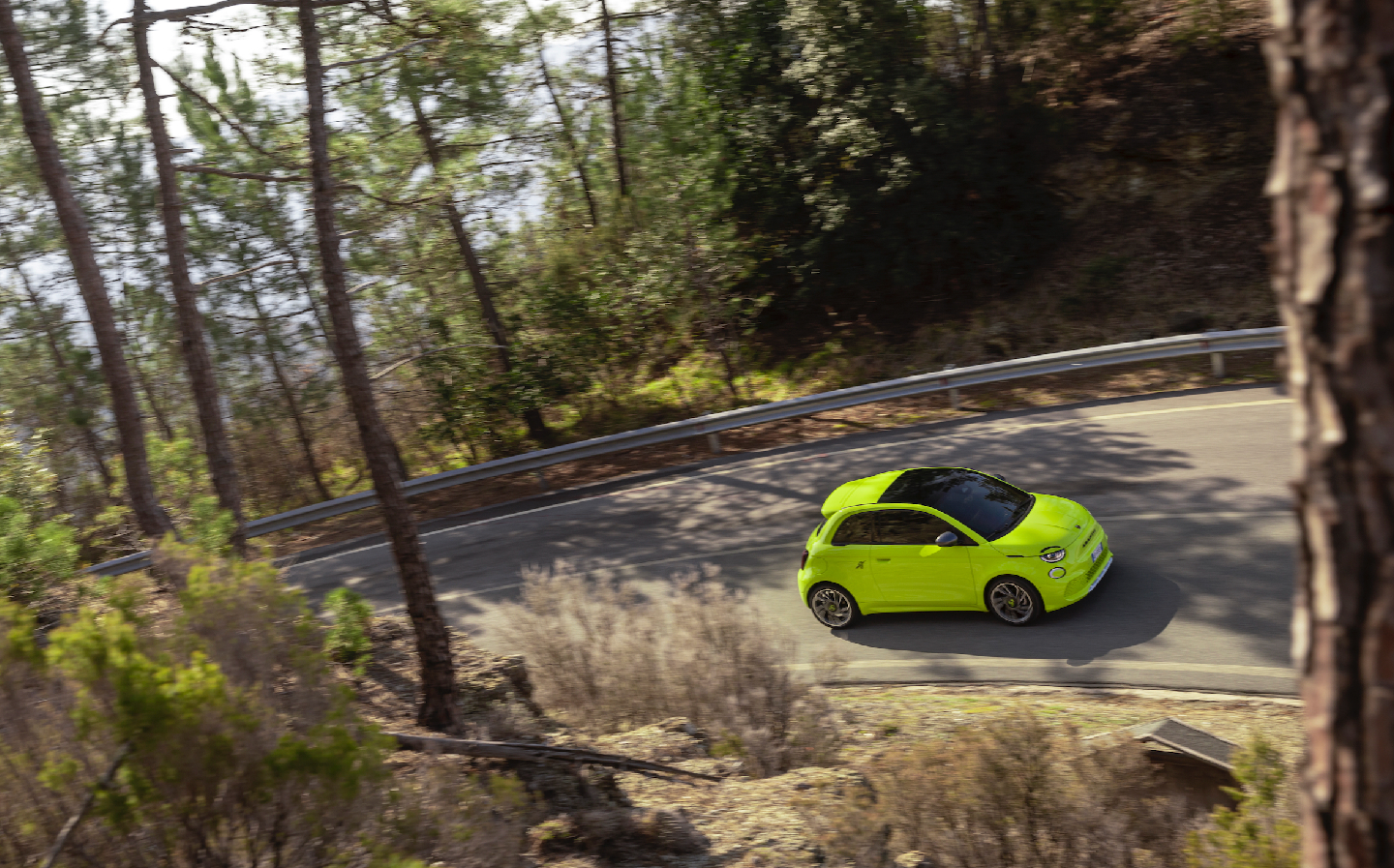Abarth 500e 2023 review: Make some noise for this electric pocket rocket
Will Italian hot hatch EV silence the petrolhead critics?
The world is badly in need of fun electric cars. Yes, we have powerful EVs, some incredibly so, but we need more models that fill us with joy on a B-road and give you that tingle down your spine – or anywhere else, for that matter.
Small hot hatch EVs like the Abarth 500e reviewed here are almost non-existent, with the possible exception of the Mini Electric. Alpine is preparing to introduce the A290 and Mini is lining up a replacement for its existing entry in the genre, but we’re not bursting at the seams with electric pocket rockets.
Step forward Abarth with its first ever electric car. The firm has had an association with Fiat dating back to the 1950s, and has been owned by the company since 1971, so has a fair amount of experience in tuning its models.
The tuner is renowned for performance versions of road and racing cars, yes, but also drama, style, fun and – importantly – noise. Its hot versions of the outgoing Fiat 500, including the 595 and bonkers 695, come with raucous soundtracks from the exhausts, with all the pops and bangs that could possibly be mustered from their 1.4-litre turbocharged petrol engines.
Going electric causes an obvious issue on this front, though the brand claims the 500e is “more Abarth than EVer” (geddit?). Can that be true? Read on to find out.
Exterior design
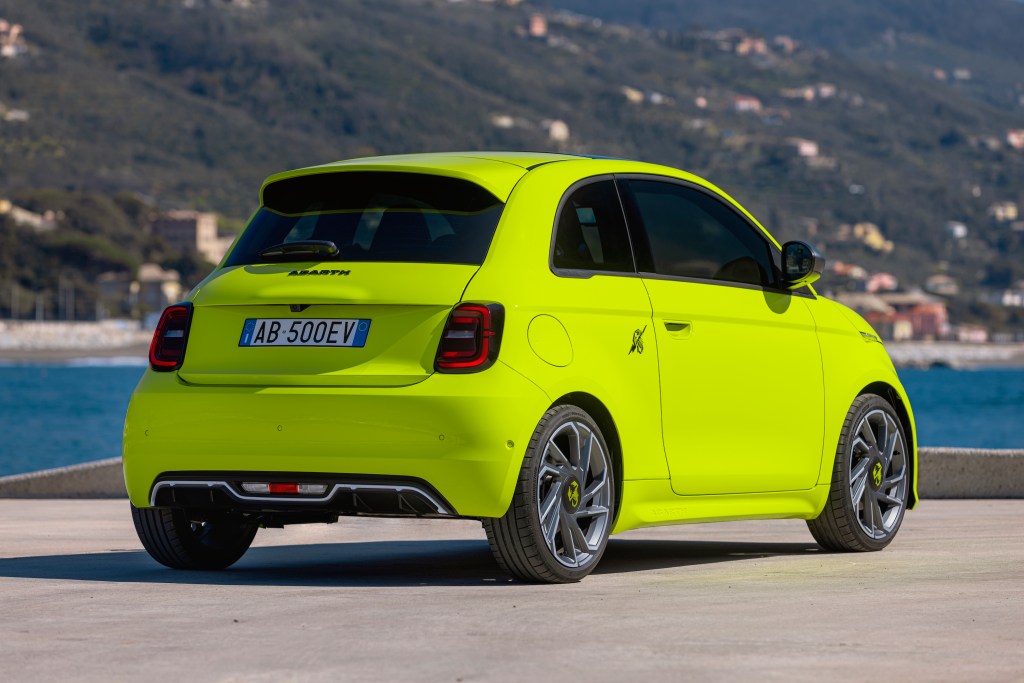
The Abarth 500e is instantly recognisable as a sportier version of the Fiat 500e, but rather than going for in-your-face air scoops and an obnoxious rear wing, simplicity was the key to the design thinking, according to François Leboine, the Fiat and Abarth’s head of design.
So as with the Fiat 500e, where you’d normally find a grille is smooth, painted bodywork, and while there is a more purposeful front splitter (with lines inspired by scorpion claws), as a well as a spoiler and diffuser at the rear to improve airflow, they’re fairly subtle and discreet additions by Abarth standards.
This is because the biggest change over the petrol-powered Abarth 500s is the customer, Leboine, said. Tastes and attitudes have evolved in recent years, he claimed, and buyers are now drawn from two groups in addition to the classic performance enthusiasts: city dwellers looking for a quality products, and a new generation of video gamers. Quite how the latter group is catered for wasn’t properly explained, but the new Abarth 500e definitely looks like a more premium proposition than before.
Bizarrely, Leboine had a tennis ball in mind when working on the 500e design. Tennis balls, he said, have an instantly-recognisable iconic design, with a bright colour, and he thinks of the Abarth 500e as a “simple object bouncing into a city”.
Bright colours are certainly a key to the Abarth 500e, with five in-your-face hues from which to choose at launch, including two new ones: Acid Green (which looked yellow to my colourblind eyes) and Poison Blue. If The Joker wants a new car, I think we’ve just found it.
Those hoping for a two-tone paint scheme, possibly with a black bonnet and roof, will be disappointed initially but Abarth’s marketing chief hinted at many more customisation options to come, so watch this space.



Despite the purity of design, there are a few details that really stand out. Number one are the upper LED headlight signatures, which have been blanked out with black trim pieces, which does have the effect of giving the face a more aggressive look. Then there’s the Abarth branding — much more obvious than before, to make sure people don’t mistake this for a humble Fiat. It includes a new scorpion logo, too, which is now combined with a lightning bolt to emphasise the electric connection.
The Abarth 500e comes in standard or range-topping Turismo spec, with hard top and cabriolet versions of both. The regular model sits on 17in wheels while the Turismo comes with 18s, and both alloys are unique to the Abarths.
Interior, practicality, technology and safety

While the outside colours are bright and cheerful, the interior is a deliberate contrast. Leboine talked about playing with a variety of black tones and layering of dark shades in order to add texture and a feeling of “premiumness”.
The addition of Alcantara in the Turismo model I drove (on the dash, seats, armrests and steering wheel), along with laser-etched elements and body-coloured contrast stitching, definitely adds to the quality feel but then there still remain a few scratchy black plastic panels here and there, including the entire lower dash and glovebox, as well as the door pockets. Whether most Abarth customers will care about this is open to debate but it will be noticeable to those used to proper premium interiors.
And while the quilted Alcantara on the dashboard is a nice touch, it does pick up — and show up — dust and debris, which means those with mild OCD will spend their lives brushing it off.




What works nicely, and is carried over from the Fiat 500e, is the steering wheel control set-up, with proper push buttons (rather than capacitive ones that you can activate by brushing them accidentally). It did take a while to remind myself where the stereo volume control is before I remembered that, as with models from Maserati, the rocker switch is on the rear right-hand side of the wheel. There’s a corresponding one for changing tracks or radio stations on the rear left side.
Also carried over from the Fiat 500e (and Maserati MC20 supercar, in fact) is the 10.25in wide-format central touchscreen, which is a massive step up from Fiat/ Abarth infotainment of old, and is fairly simple to operate. This includes an area for Performance stats, including
It’s paired with a fully-digital 7in instrument cluster behind the wheel, which offers clear, precise details of battery level and range, along with the usual info. It can also display navigation, trip info, etc., depending on what you want to prioritise.
It also contains settings that can’t be accessed via the central touchscreen, including the ability to turn on or off the Abarth Sound Generator. This uses a waterproof subwoofer, mounted under the floor of the car, to create a noise approximating the sound of the old turbocharged petrol engine in the Abarth 695.
This is a fairly controversial feature of the Abarth 500e and comments under journalists’ social media posts from the launch suggests it is more polarising than Brexit – some think it’s fun while others absolute loathe it.
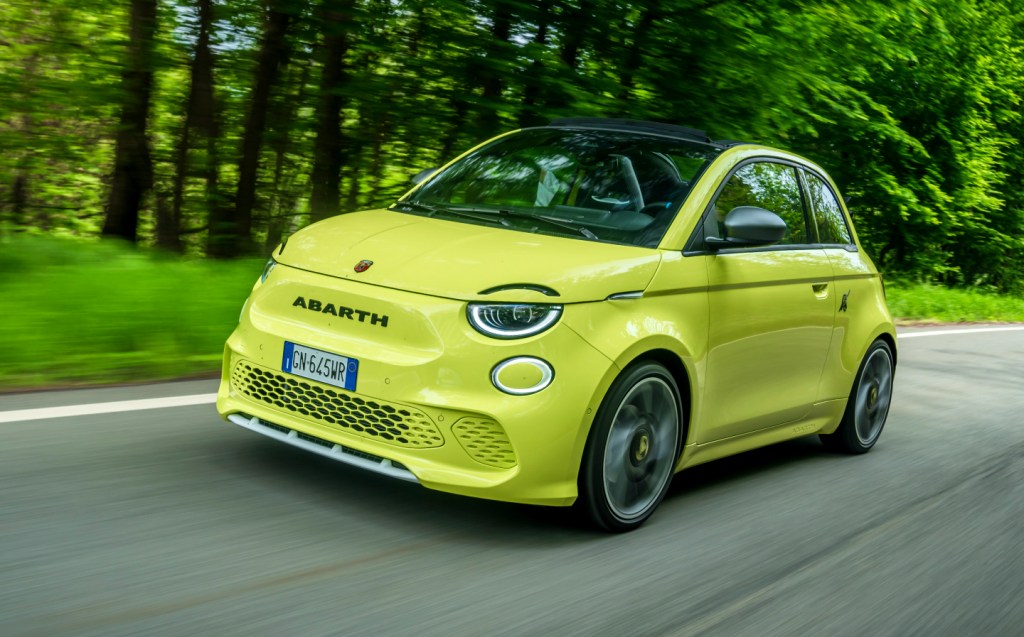
The thought process from Abarth is reasonable enough. “Imagine an action movie with the sound turned off,” we were told, and the term “emotion” was thrown at us several times during our briefing. “The goal is to make sporty driving even more engaging.”
The noise itself is as close to a real engine sound as you can get from a synthesiser (I’ve seen the audio graphs compared) but it’s still artificial and you don’t get the gear changes as the speed increases — it’s a constant increase in tone. That can be a real pain at a cruise, where the synthetic din makes you want to jam Biros into your ears.
Worse, you can’t access the submenu to switch it off while in motion — you can only do so while parked. Would a button by the drive mode selector have been too tricky, Abarth?
My conclusion was that the Sound Generator is for poseurs in cities, looking to be noticed while cruising around for coffee. But I’ll wager even they would probably like to switch it off when out of town as the emotion it makes you feel is not one that Abarth intended.
On the plus side, the JBL stereo (standard across the range) is decent and the car comes with Android Auto and Apple Carplay as standard, along with over-the-air updates and a smartphone app allowing owners to check on battery status, vehicle location, and even open and close the doors.
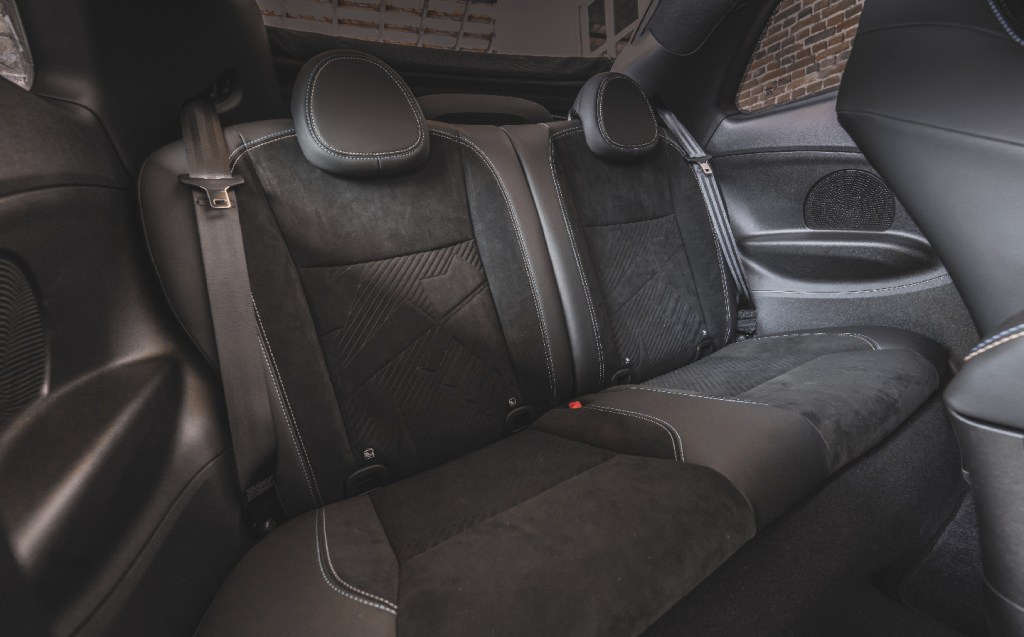
All cars come with cruise control, rear parking sensors, auto-emergency braking and lane-keep assist, while the Turismo models gain luxuries such as heated front seats, a wireless charging pad, a rear-view camera with 360-degree sensors, heated mirrors and windscreen, and automatic headlight dipping, while safety features include a blind spot warning system.
We don’t know the Abarth 500e Euro NCAP safety results but the Abarth will be very similar to the Fiat 500e, which received four stars and a pretty good report, despite its tiny size.
In terms of space for humans and luggage, you have to take into account this is a small city car, but roominess is improved over the previous Abarth 500s, and in fact the car is pretty comfortable to drive even for tall people. Ergonomically-speaking, this is a massive step up, though bizarrely, driver seat height adjustment is only available on the Turismo models.
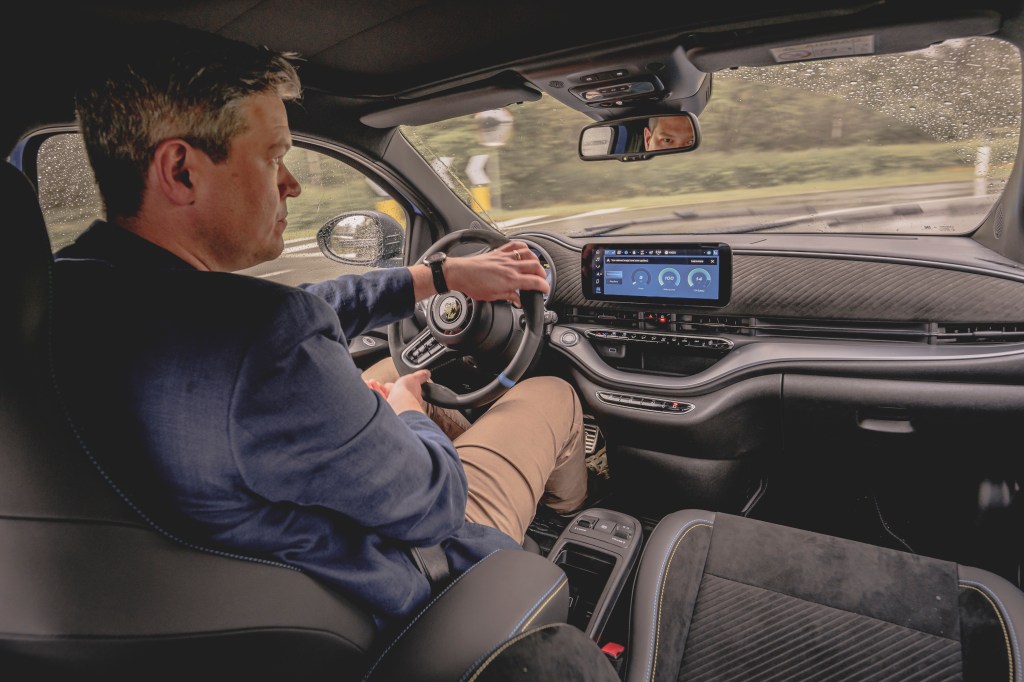
That’s in large part thanks to the wheels being pushed apart in both width and length, which also helps improve space for back seat passengers, though it’s still tight back there. At 6ft 5in tall, I didn’t even attempt to squeeze in behind the front seats but children should appreciate the difference.
The boot, meanwhile, offers 185 litres of space, rising to 550 litres with the rear seats folded, which is small by any standards. But what were you expecting?
Performance, range and charging speed
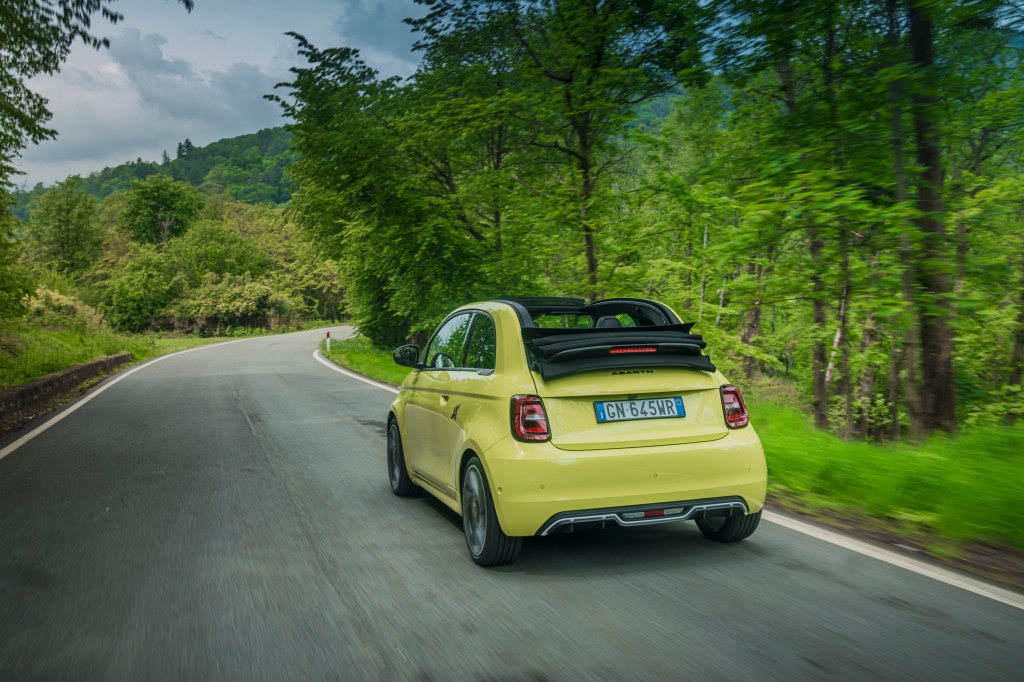
Is it a hot hatch? Well it’s quick, certainly, and actually beats the petrol Abarth 695 in some crucial performance areas. It’s a second quicker from 12 to 25mph, for example, thanks to the electric motor providing maximum torque (twisting force) all the time. It’s also a second quicker in the 25mph to 37mph range. This means that at less than 40mph it feels noticeably punchier.
Inevitably, the 500e runs out of steam at higher speeds, due to the single gear, but given that Abarth claims its customers only spend 20 per cent of their time on highways (the rest in cities and B-roads) that’s perhaps not so much of an issue.
It’s also quicker – in top speed and acceleration – than the Fiat 500e, thanks to some Abarth-specific tuning of the motor, inverter, gearing, control system, pedal map and even the battery. That’s right, they didn’t just tweak the styling and suspension – every drivetrain component was looked at to squeeze maximum performance out of the package.
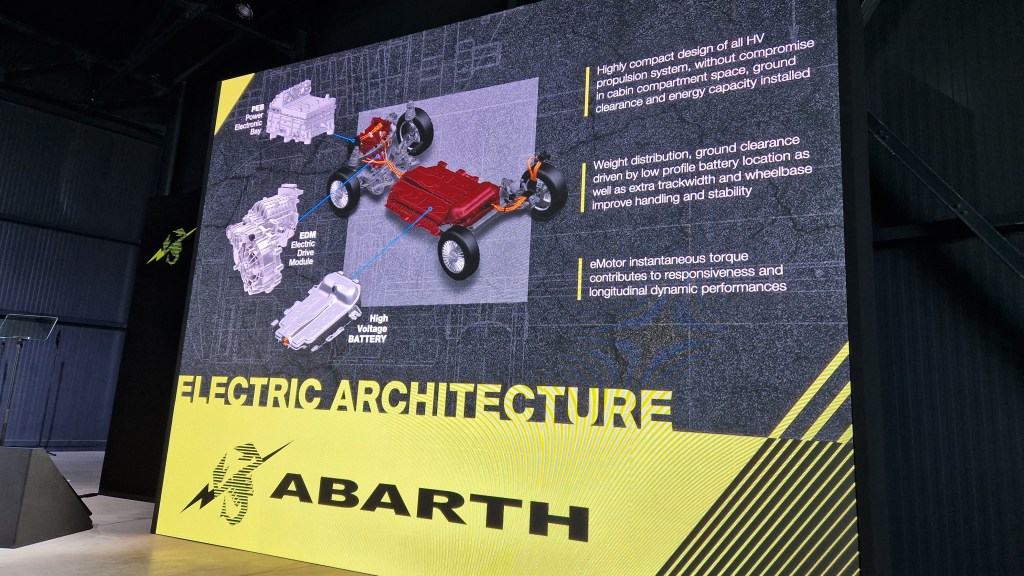
What that means for aftermarket tuners is a headache, because uprating the motor means changing the inverter and control unit, and that means changing the battery to provide the necessary voltage. At that point, you’ve basically changed the whole car – and at great expense.
I was told by the powertrain chief over dinner that it would be possible to re-progamme the system to send more power from the battery to the motor – essentially overboost it – but there’s a maximum voltage before the electric motor just stops working altogether, and going nearer that maximum could damage the battery. Abarth designed the 500e with an eight-year, 160,000km warranty in mind, and that would be invalidated by any tinkering.
Actual performance figures? The Abarth 500e’s top speed is 96mph, though is clearly not a car designed for V-maxing. The 0-62mph sprint takes 7sec dead, which is impressive given the Mini Electric has 181bhp and reaches the same speed in 7.3sec.
In practice the Abarth 500e certainly feels quick. There are three driving modes: Turismo, Scorpion Street and Scoprion Track, with the latter two both giving the full beans from the e-motor but the difference being that regenerative braking is much stronger in Scorpion Street mode.
Back-to-back tests with the Abarth 695 at the Stellantis test track near Balocco, Italy, revealed that the electric model lacks nothing in punch and planting the accelerator will press you even more firmly into the seat.
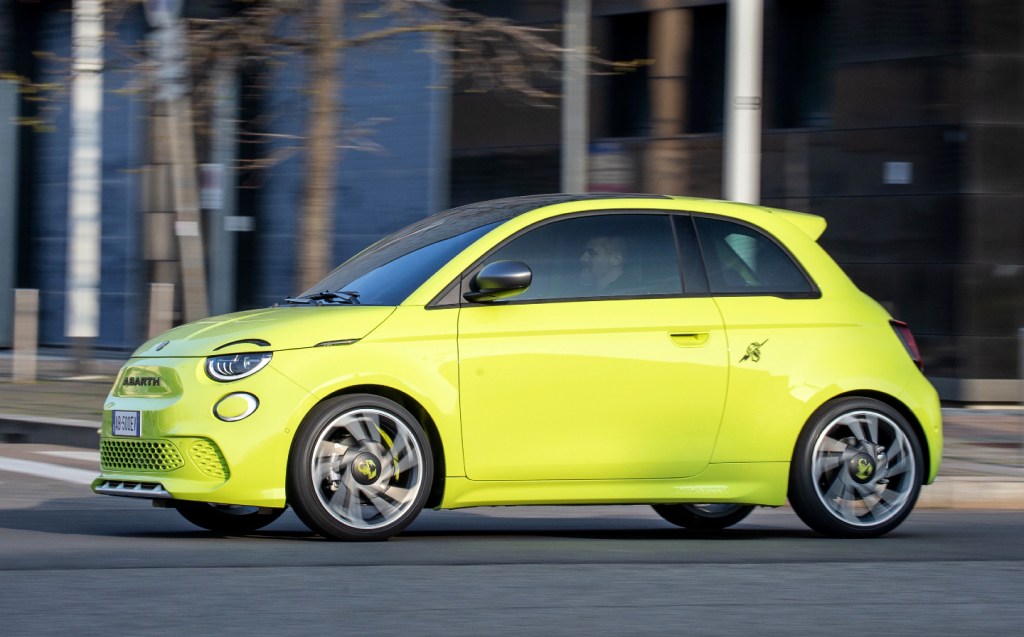
It’s much less bonkers, though: put your foot down out of a corner in the Abarth 695 and on a damp track, as faced us during the test drive, the wheels will spin with wild abandon, and the car will want to understeer off the road. It feels like a machine that has to be tamed, and a tricky one to master. But with the 500e, there’s more grip (see below) and the electronic brain also does a much better job at distributing torque and preventing wheelspin (even in Scorpion Track mode), so it’s a much easier car with which to put the power down and drive quickly around a tight track.
Drive it sensibly and the official range between recharges, on a mix of roads, is between 150 and 164 miles, depending on the version (the entry-level Abarth 500e goes furthest). Motorways sap range though, as does cold weather and a variety of other factors, so bear that in mind before handing over your cash. In the city, though, you’ll likely beat those figures: Abarth claims all the variants are capable of more than 200 miles around town.
When you do need to plug in the maximum speed is 85kW using a DC, which isn’t the best out there but is still classed as “rapid”, and good enough to take the battery from empty to 80 per cent in 35mins, with a five minute charge in optimum conditions adding 25 miles.
Ride and handling
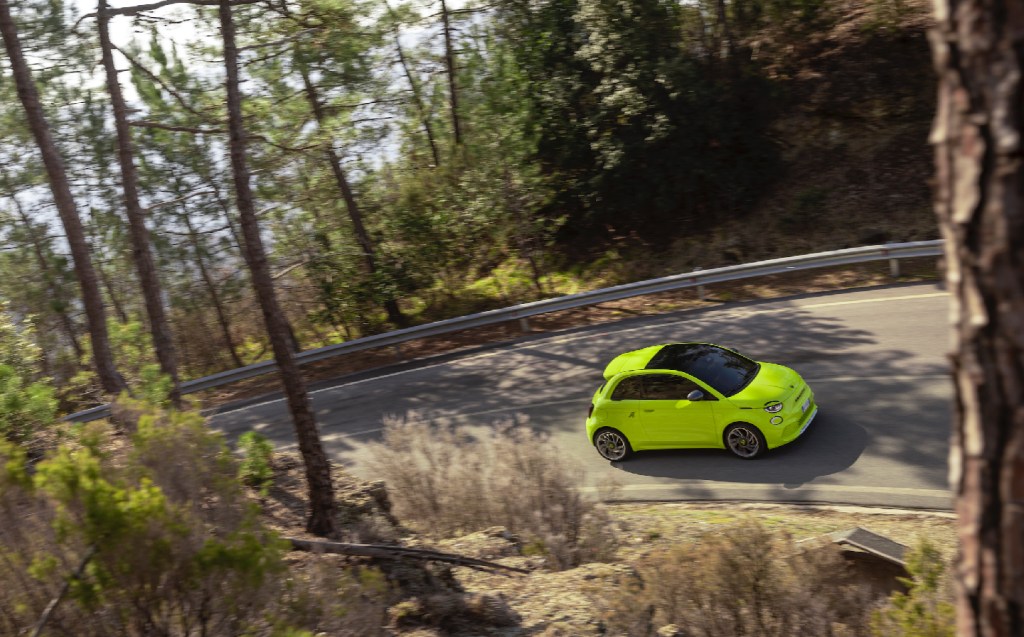
Even the most ardent Abarthista will admit that the ride quality of the old Abarth 500 petrol models isn’t their strong suit – it’s not the point of the cars. The suspension and damping can vary depending on version but are all on the firm side, of course, and the ultra-short wheelbase (distance between the front and rear wheels) means that going over a UK road hump can seem like scaling Everest.
That’s all changed with the Abarth 500e because the wheels have been pushed further apart lengthwise (24mm) and across the width (60mm). This has dramatically reduced the feeling of pitch and roll while also hugely improving the handling characteristics. Again, those die-hard fans of the 595 and 695 may scoff at the reduction in loony factor, but there’s no doubting the new electric car feels more stable on the brakes, grippier on turn-in and more predictable in its balance.
The latter factor is helped additionally by the fact the centre of gravity in the electric model is lower, with the large mass of the battery pack under the floor, while weight distribution front-to-rear is more even than in the petrol models, with 57 per cent over the front wheels (compared with 63 per cent in the 695).



All factors combined, the new Abarth 500e is quicker to hustle around the Balocco track and also much easier to do so… which might be why a couple of the keener wheelsmiths on the launch said they preferred the 695, which felt looser and wilder. I’m half-decent behind the wheel, too, and it was obvious to me which car I’d rather spend time with on track – the 500e. By any objective measure it is the better car around that tight circuit.
Of course, the 695 would post a faster lap time around quicker, more flowing tracks, by virtue of the fact that its turbocharged petrol engine will help the car reach higher speeds.
Out on the road, the 500e also shows it’s the more grown-up car, absorbing road imperfections and providing much more grip than the old model. It’s definitely a more enjoyable thing to pilot down a wet country lane. Though there was still some push-on into an unexpectedly tight downhill left-hander, that was easily tidied up with firmer braking, transferring the weight onto the front wheels.
Out on the highway, refinement is greatly improved and it feels more at home among the bigger vehicles, due to improved stability and mass, though wind and tyre noise are still apparent. Just remember to turn off the silly sound generator before hitting the motorway.
Prices and on sale date
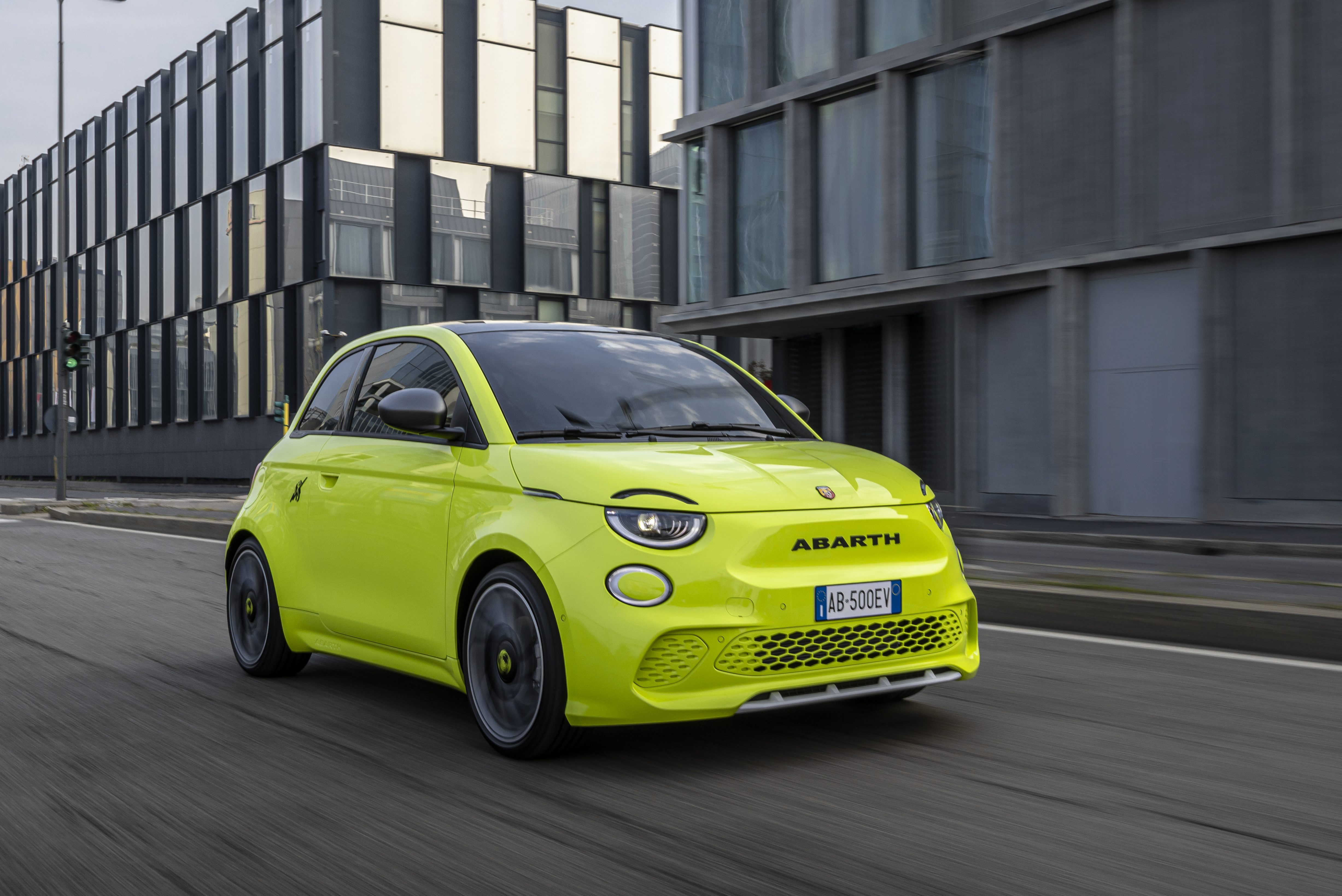
The Abarth 500e is on sale now with deliveries beginning in the UK from next month (June).
Prices start at £34,195 for the hard-top 500e, with the Cabrio version in the same spec attracting a £3,000 premium. That means it’s exactly the same price at the range-topping Fiat 500e La Prima by Bocelli.
For your money you get 17in alloys, racing-inspired seats, cruise control, keyless start (but not keyless entry), dual-zone climate control, auto wipers and lights, digital instruments, the 10.25in touchscreen with CarPlay and Android Auto, a premium JBL stereo and rear parking sensors.
The Turismo versions cost £38,195 and £41,195 respectively, which means the drop-top version attracts the government’s expensive car tax premium for cars costing over £40,000 (at the time of writing), which is something to watch out for.
The £4,000 premium over the regular Abarth 500e gets you the likes of 18in wheels, the Alcantara-trimmed interior, heated front seats and door mirrors, driver’s seat height adjustment (amazing that this isn’t included on all models, frankly), 360-degree parking sensors and a rear-view parking camera.
Verdict: 2023 Abarth 500e review
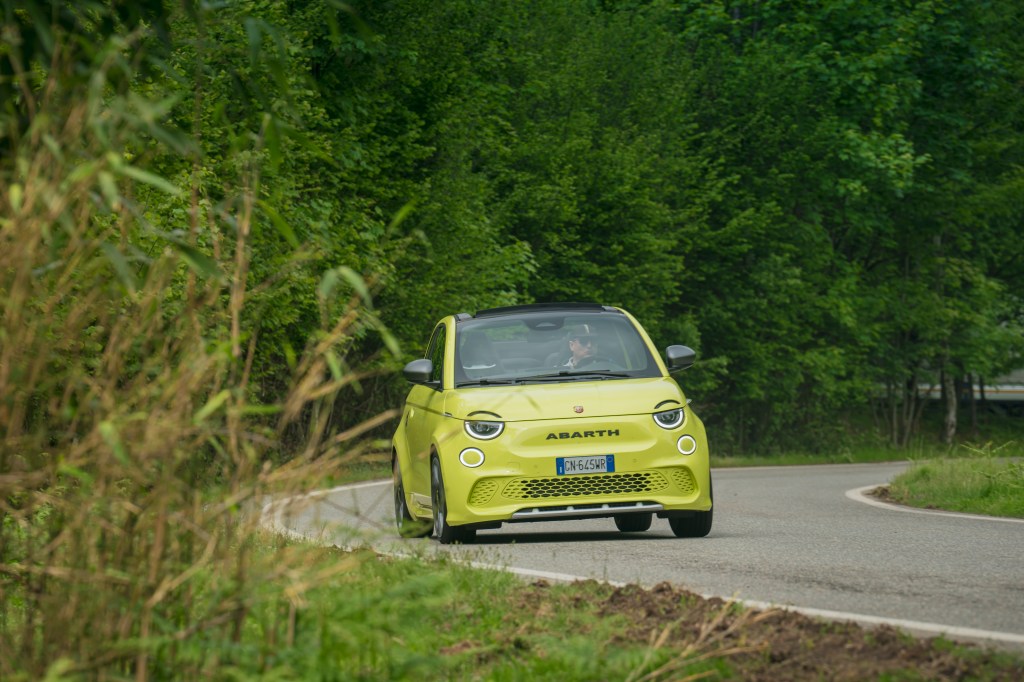
Abarth first pure-electric car is also its most accomplished version of the 500 yet. Ride, handling, cornering stability and refinement are a huge step up over the 595 and 695 petrol versions. It’s quicker, too, in almost every sense that matters for a compact hot hatch.
Meanwhile the designers have done a cracking job with the look of the thing, enhanced by bold colours that will no doubt be added to in future.
All of these achievements will fall on deaf ears when it comes to some die-hard Abarthisti, who’ll miss the wildness of the petrol models, the pops and bangs from the exhausts and the ability to tune the engines. But the electric 500e is an Abarth for the modern age, delivering thrills without the fumes, while also likely appealing to a broader range of customers.
I’ll be interested to see how many owners aren’t reaching for the Sound Generator’s off setting within the first few hours of ownership, though.
Follow @wdron Tweet to @wdronRelated articles
- If you enjoyed this review of the Abarth 500e, you may be interested in this Abarth 595 Turismo review (2017 on)
- Also check out Will Dron’s review of the Abarth 124 Spider (spoiler: he liked it)
- And here’s the five best city cars to buy this year
Latest articles
- Omoda 5 prototype review: Bargain family SUV is solid first effort for new Chinese brand
- Dacia Duster 2024 review: Rugged, affordable SUV modernised with electrification and quite the glow up
- Audi A3 Sportback 2024 review: Softly, softly, catchy premium hatchback buyer
- New electric-only Mini Aceman fills gap between Mini Cooper hatch and Countryman SUV
- Tesla driver arrested on homicide charges after killing motorcyclist while using Autopilot
- Porsche Macan 2024 review: Sporty compact SUV goes electric, but is it still the class leader for handling?
- F1 2024 calendar and race reports: What time the next grand prix starts and what happened in the previous rounds
- Aston Martin DBX SUV gets the interior — and touchscreen — it always deserved
- Nissan unveils bold look for updated Qashqai, still made in UK


